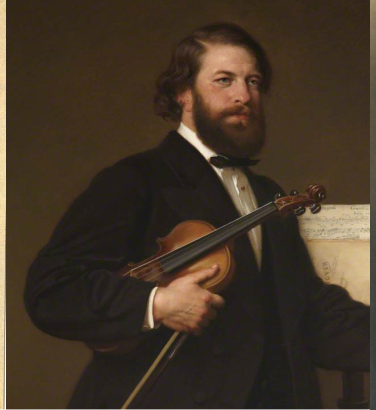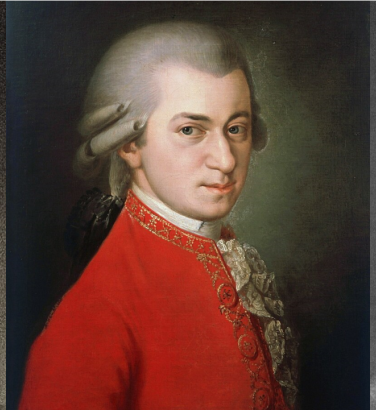
The resurrection of the string orchestra
3 Jun 2024
News Story
Three prominent composers of music for strings, from left to right: Vaughan Williams, Tchaikovsky and Penderecki
The orchestra as we know it today is an ensemble which built up slowly over the centuries, but the strings have been at its core since the Baroque era. Other instruments were introduced gradually: first oboes and horns (sometimes with a bassoon), then the flute and clarinet, with the addition of trumpets and timpani for festive occasions. By the end of the Classical period, the ensemble had become what is now recognised as a chamber orchestra.
The brass family was the next to expand, with trombones, the tuba and additional horns, adding so much to the volume of sound that more string instruments were required for the sake of balance – and again once the percussion section began to grow. This change is perhaps best summed up by the number of double basses, the bedrock of most orchestras today: whereas a chamber orchestra typically require no more than a pair, it is rare for a symphony orchestra to have any fewer than eight.
With the size of the orchestra showing no sign of slowing down, and the string quartet remaining the standard ensemble for chamber music, it is perhaps not surprising that composers should have sought a middle ground between these two extremes – with the revival of music for string orchestra marking a return to basics, of sorts.
Among the first of these was Tchaikovsky’s Serenade for Strings (which the SCO Strings played as part of the 2024 Summer Tour), written in 1880. The string orchestra had effectively become unchartered territory by then: the only other major composer of the age to have written for strings alone was Dvořák, whose own Serenade for Strings had appeared a mere five years earlier. This was still long before he was known internationally, and there is no reason to suppose that Tchaikovsky knew the work. He certainly was not acquainted with Mendelssohn's youthful set of symphonies for strings, written in 1821-23 but subsequently lost until their rediscovery in 1950.
For many up-and-coming composers, works for string orchestra proved a valuable exercise in fine-tuning their skill in writing for this vital section of the orchestra. What might now be termed a soft launch for their career also reduced the weight of expectation. Thus Neilsen, Elgar and Suk (a pupil of Dvořák’s) all composed music for strings within a few years of each other in the late 19th century, with Vaughan Williams, Sibelius and Berg following suit by the 1920s. Of these, Vaughan Williams’ Fantasia on a Theme of Thomas Tallis is probably the best-known (and most mature), but all are now acknowledged as significant steps towards the composers finding their individual voices.
The trend would continue long into the 20th century – see Britten’s Simple Symphony and Variations on a Theme of Frank Bridge, or Penderecki’s earliest compositions in the late 1950s – but many more established composers would be drawn back to the medium of the string orchestra. Besides Bartók's Divertimento, we should also include here Barber's Adagio for Strings and Warlock's Capriol Suite, both written earlier in their careers but newly arranged for string orchestra.
In some cases, the choice of instruments was dictated by the music itself. All the way back in the 1880s, Grieg’s Holberg Suite had celebrated the bicentenary of the playwright Ludvig Holberg, born at a time when the standard orchestra was made up of nothing but strings. The rising popularity of a neobaroque style across all the arts had a lasting impact on music, with Vaughan Williams’ Concerto grosso, Stravinsky’s Concerto in D or Tippett’s Fantasia Concertante on a Theme of Corelli being among the works inspired by music of a bygone age.
From a more modernist perspective, the string orchestra developed beyond playing richly lyrical music to communicate sometimes harrowing emotions. This was to a great extent driven by the conflicts of the 20th century: Strauss started work on Metamorphosen (written for an ensemble of 23 string instruments) the day after the severe bombing of the Vienna State Opera in 1945, and Penderecki’s 1961 Threnody to the Victims of Hiroshima is every bit as unsettling as its title suggests. The most (in)famous of any music for string orchestra had received its premiere only one year before this, with Bernard Herrmann’s score for Hitchcock’s Psycho a perfect match for the film’s stark black-and-white visuals. It’s all a far cry from the innocent pleasures of Mozart’s Eine kleine Nachtmusik.
Related Stories
![A violinist shown at three different ages: as a young man in a drawing, middle-aged in a painting and elderly in an old photo]()
Joseph Joachim and the great German violin concertos
7 April 2025
Beethoven, Mendelssohn, Bruch and Brahms: four violin concertos, all connected by a single violinist.![Three men, the first two in 18th century formal dress (one in black and white, one in a red coat), the last in an old photo, smoking]()
What is a sinfonia concertante?
17 March 2025
We delve into the history of a hybrid genre ...![]()
The SCO Chorus on music for Lent
10 March 2025
With Easter just around the corner, we delve into perhaps the richest (and often darkest) choral repertoire of all ...


